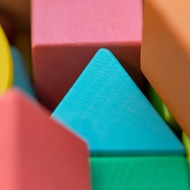
(View Complete Item Description)
Through the two lessons and five activities in this unit, students' knowledge of sensors and motors is integrated with programming logic as they perform complex tasks using LEGO MINDSTORMS(TM) NXT robots and software. First, students are introduced to the discipline of engineering and "design" in general terms. Then in five challenge activities, student teams program LEGO robots to travel a maze, go as fast/slow as possible, push another robot, follow a line, and play soccer with other robots. This fifth unit in the series builds on the previous units and reinforces the theme of the human body as a system with sensors performing useful functions, not unlike robots. Through these design challenges, students become familiar with the steps of the engineering design process and come to understand how science, math and engineering including computer programming are used to tackle design challenges and help people solve real problems. PowerPoint® presentations, quizzes and worksheets are provided throughout the unit.
Material Type:
Full Course,
Unit of Study
Authors:
Pranit Samarth,
Riaz Helfer,
Sachin Nair,
Satish S. Nair




















